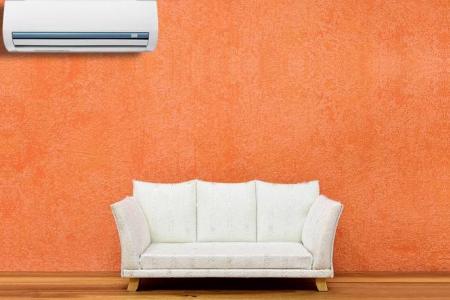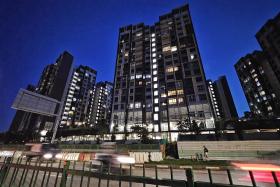How do I conserve power and save money while using household appliances?
Despite lower fuel prices, electricity prices are still climbing in Singapore.
Increased carbon taxes in 2024, now at $20 per tonne of emissions from the previous $5 per tonne, have compounded cost pressures.
To offset the higher costs of electricity and water consumption, residents in one- to three-room flats can consider using climate vouchers, whose validity has been extended till March 20.
Under the Climate Friendly Households Programme (CFHP), each eligible household can claim a $150 voucher to buy an energy-efficient refrigerator, a $25 voucher for LED lights and a $50 voucher for water-saving shower fittings.
The vouchers are applicable for energy- and water-efficient appliances rated with three or more ticks.
The Straits Times explores some ways to conserve electricity when using common household appliances.
Q: Which common household appliances consume the most electricity?
A: The biggest energy guzzlers are air-conditioners, refrigerators, fans, water heaters, and non-LED lights such as fluorescent lights, said Dr Eddy Foo, senior lecturer at Nanyang Technological University’s School of Electrical and Electronic Engineering.
Old television sets using cathode-ray tube technology can consume substantial amounts of electricity too, said Dr Foo.
Q: How do I calculate how much power an appliance consumes?
A: In the monthly utilities bill, electricity consumed is usually indicated in kilowatt-hours.
To convert to kWh from the wattage indicated in the technical specification of a home appliance, multiply the energy consumed in kW by the duration in hours that it was used, said Ms Wei Linyun, vice-president of sustainability and business Development for Singapore at Schneider Electric.
If the appliance was running for less than an hour, say, 45 minutes, the duration can be derived by dividing 45 minutes over 60 minutes, which is equivalent to one hour, said Dr Foo.
But the rated power of the appliance is usually higher than the actual power it consumes, said Mr Alvin Ee, research fellow at the Energy Studies Institute of the National University of Singapore.
He explained that the rated power is the maximum power that an appliance consumes. For example, if an oven’s light is turned on without heating or fan, the actual power consumed will be lower than the rated power.
Q: What should I look out for in my monthly electricity bill?
A: There are two main things to look out for in an electricity bill, said Dr Foo; the amount of kWh consumed and the electricity price per kWh. The electricity bill for the month is derived by multiplying the amount of kWh with the electricity price.
Mr Ee said the power bill also allows for simple analysis.
He highlighted that the bar graph showing past months of consumption can demonstrate trends and indicate potential changes in energy consumption patterns like higher use of air-conditioning due to the warmer weather, or a new appliance at home.
“This indicates how a lifestyle change or introduction of new household products affects the overall consumption,” said Mr Ee.
Households that purchase electricity from national retailer SP Group can also compare their electricity consumption with that of their neighbours or with the national average for similar housing.
Such comparisons, said Mr Ee, gauge household energy consumption.
“If a household’s consumption is higher than the neighbourhood and national average, the household might not be using electricity efficiently,” he added.
Q: How can I boost the energy efficiency of my home appliances?
A: Under the Mandatory Energy Labelling Scheme, the number of ticks on the energy labels indicates how efficient an appliance is. An appliance is considered more energy-efficient when it uses less electricity to produce a particular output, compared with another appliance that uses more electricity to produce the same output.
When considering the energy efficiency of an air-conditioner, room size is key.
The National Environment Agency recommends that the cooling capacity, expressed in kilowatts, should be five times the total floor area, in square metres, that an air-conditioner needs to cool.
An air-conditioner with a higher capacity than is needed for a given room would waste electricity, while an undersized air-conditioning system would not be able to deliver the desired cooling effect.
Q: Which air-con settings – cool, eco, dry or auto – provide the most savings?
A: Thermal comfort is affected by both humidity and temperature in a room, said Mr Ee.
Dr Foo said dehumidifying the air in dry mode consumes less energy compared with cool mode. In dry mode, the fan unit runs slower, and, most importantly, the compressor unit runs less frequently than when the unit is operating in cool mode.
Mr Ee explained that an air-conditioner running in cool mode helps to reduce the temperature in a warm and humid space, while dry mode is recommended for a space which that is humid but at a relatively comfortable temperature – this is because dry mode helps to reduce humidity to approximately 60 per cent while maintaining temperatures.
Q: Will turning on the fan and the air-con at the same time help save electricity?
A: Combining the use of an air-conditioner with a ceiling fan is an efficient practice in Singapore, said Mr Ee.
This is because the fan helps distribute the cool air evenly, enhancing the cooling effect and allowing the air-conditioner to be set at a higher temperature. In addition, it helps to draw warm air from the surface faster, reducing the air-conditioner’s workload and energy consumption.
Q: LED lights consume less power but are more expensive than non-LED lights. Is buying them still the better option?
A: While LED lights are more expensive, they are the more economical option in the long run, said Ms Wei. This is because they often last longer than non-LED lights.
Get The New Paper on your phone with the free TNP app. Download from the Apple App Store or Google Play Store now


